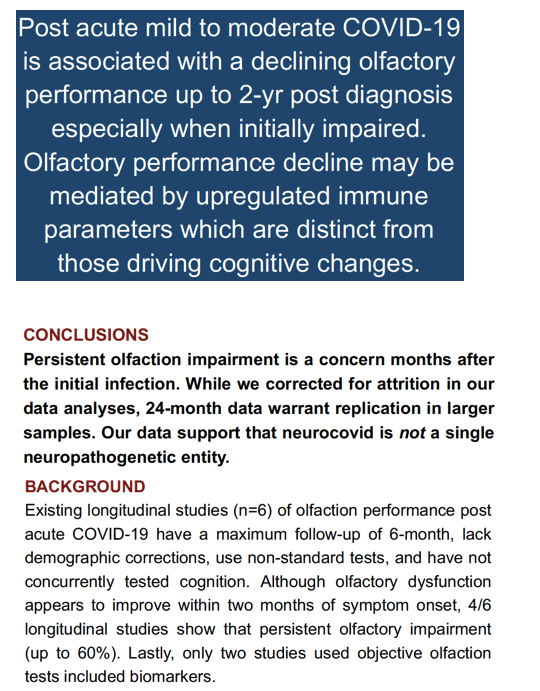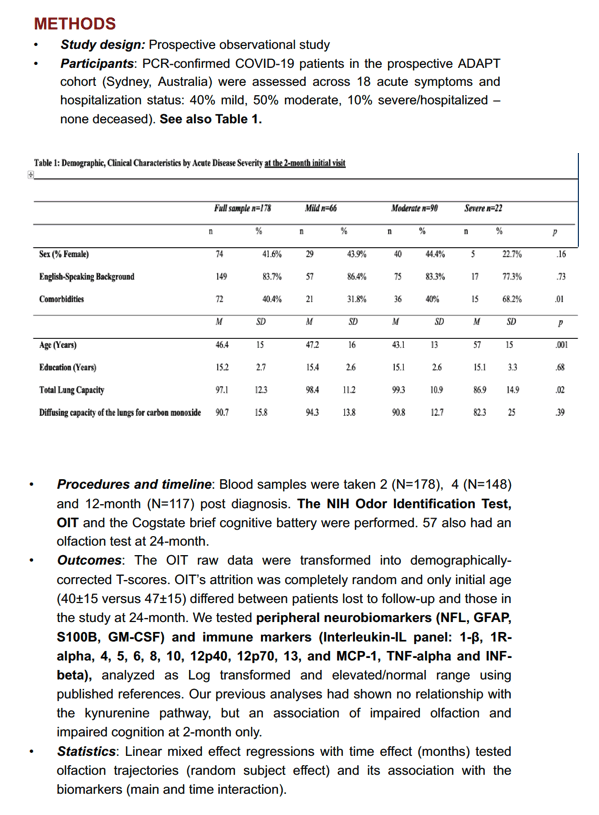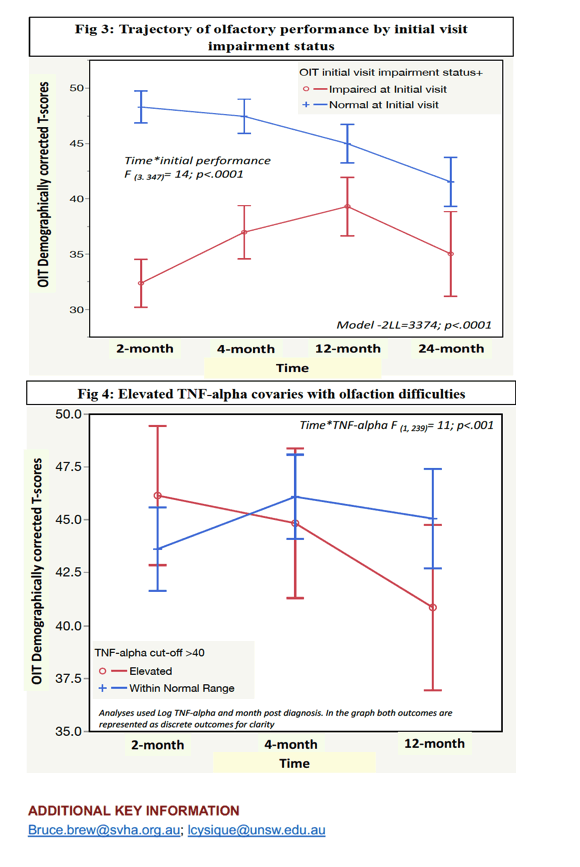 |
 |
 |
| |
OLFACTORY PERFORMANCE IN POST
MILD-TO-MODERATE ACUTE COVID-19 ACROSS 2 YEARS
|
| |
| |
CROI 2023 Feb 20-23
Lucette A. Cysique1,5, Faye Yang5, Amy Regan5, Valerie Bramah2, Benjamin Heng7,8, Sharron Chow7, David Darley2,4, Anthony Byrne2,4, Anthony Kelleher2,3 Gregory Dore2,3, Gail Matthews2,3 Gilles J Guillemin7,8, & Bruce J. Brew1,2,4
1. Peter Duncan Neuroscience Research Unit, St. Vincent’s Centre for Applied Medical Research, Darlinghurst, NSW, Australia; 2. St. Vincent’s Hospital, Darlinghurst, NSW, Australia; 3. Kirby Institute, UNSW, NSW Australia; 4. Faculty of Medicine, UNSW, Sydney, NSW Australia; 5. School of Psychology, UNSW,
Sydney, NSW Australia; 6. School of Psychology, Macquarie University, NSW, Australia; 7. Macquarie Medical School, Macquarie University, NSW, Australia; 8. PANDIS.org
Olfactory is a word that often appears in scientific contexts (as in "olfactory nerves," the nerves that pass from the nose to the brain and contain the receptors that make smelling possible), but it has occasionally branched out into less specialized contexts.
The olfactory system, or sense of smell, is the sensory system used for smelling (olfaction). Olfaction is one of the special senses, that have directly associated specific organs. Most mammals and reptiles have a main olfactory system and an accessory olfactory system. The main olfactory system detects airborne substances, while the accessory system senses fluid-phase stimuli.
The senses of smell and taste (gustatory system) are often referred to together as the chemosensory system, because they both give the brain information about the chemical composition of objects through a process called transduction. https://en.wikipedia.org/wiki/Olfactory_system




|
| |
|
 |
 |
|
|